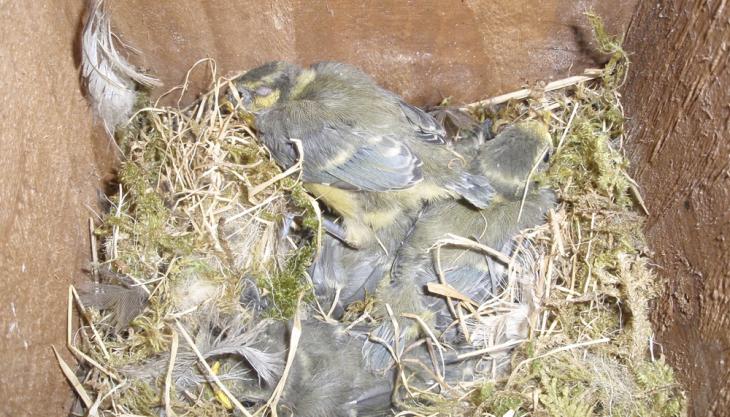Feathered friends flock to Panshanger

Scheme to erect small-hole nest boxes at Lafarge’s Panshanger Park Estate proves a big success
A FLEDGLING scheme to erect nest boxes at Lafarge’s Panshanger Park estate has proved a flying success. Almost half of the 50 new, small-hole nest boxes attracted brooding pairs this year, despite being put up late in the breeding season.
Lafarge Aggregates & Concrete UK, who manage the park and operate a gravel quarry on site, are now planning to liaise with local wildlife experts to extend the bird-friendly initiative.
Mike Pendock, Lafarge regional planning and estates manager - south, said: ‘While Lafarge is a quarrying and construction materials firm, we are also guardians of thousands of acres of land across the country – 120ha at Panshanger alone – and so have a duty to try to encourage and enhance habitat for wildlife wherever possible.
‘Promoting biodiversity is a major priority and we do all we can to give a helping hand to the flora and fauna on our sites.’
The nest boxes were installed at the suggestion of local Hertfordshire bird ringer Mike Reed after similar schemes elsewhere had shown positive results. He contacted Tim Hill, from Hertfordshire and Middlesex Wildlife Trust, a member of the local management committee for Panshanger, who worked with Lafarge to get the project off the ground.
The 50 boxes, made by Mr Reed’s volunteer helpers, were put up on 1 April. Nineteen of the boxes attracted occupants, mostly blue tits, but also one pair each of great tits and coal tits.
In total, 147 eggs were laid, of which 124 hatched and 100 chicks survived to fledge – a high percentage and an indication of the rich biodiversity of the site.
Monitoring of the boxes was undertaken by Mike Reed and his volunteers and on later visits chicks and some adults were ringed to allow future data-gathering. This information will be used going forward to help make decisions about the management of the park.
‘For 2012 we are hoping to double the number of small-hole nest boxes erected and also provide some larger boxes for species such as kestrel, little owl, barn owl and tawny owl and possibly mandarin duck,’ said Mr Reed.


